Secondary Beam Design Results
The secondary beam design results and the failure conditions of the steel beams are displayed in the Secondary Beams dialog. The secondary beams dialog displays PMM ratios, combinations and deflection results. In the “ Details ” tab, material and section properties, internal force values, axial compressive strength, bending moment strength in strong and weak axis, design variables and lateral stiffness coefficients (K coefficient, L factor etc.) and PMM ratio are displayed.
If composite slab is defined for secondary beams, secondary beams become composite beams and are evaluated according to composite beam design criteria.
Location of Secondary Beams Dialog
After the analysis is done, you can access it by clicking the Secondary Beam command under the Steel Design heading in the ribbon menu Analysis and Design tab .
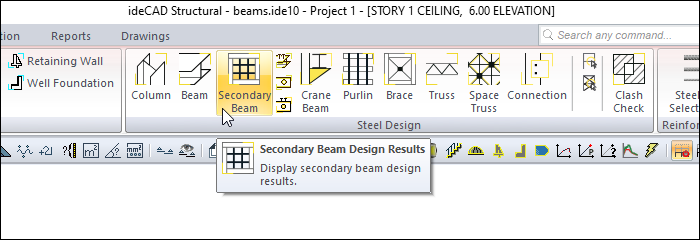
Secondary Beams

Specifications |
|---|
ID 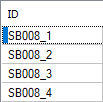 It is the name of the secondary steel beam in the plan. |
Section  It is the section used in the secondary steel beam. |
Material  It is the material used in steel beam. |
PMM ratio  It is the ratio of requirement to section capacity (PMM Ratio = Need/Capacity). |
Combo  It is the load combination that produces the most unfavorable PMM ratio. |
Maj-Shr-Ratio  It is the ratio of the shear force in the major direction of the section to the capacity in the major direction. |
Combo  It is the load combination that produces the most unfavorable stress ratio in the major direction. |
Min-Shr-Ratio  It is the ratio of the shear force in the minor direction of the section to the capacity in the minor direction. |
Combo  It is the load combination that produces the most negative stress ratio in the minor direction. |
Strength check  It is an information box whose sign changes according to the presence or absence of negativity in the cross section. |
Deflection  It is the deflection value made by the secondary steel beam. |
Limit value  It is the value of the maximum allowable deflection in the secondary steel beam. |
Deflection check  It is an information box whose sign changes depending on whether the deflection limit is exceeded or not. |
Details  Design details are shown in detail. |
Previous  The cursor moves to the previous line. |
Next  The cursor goes to the next line. |
OK  It saves the changes made and closes the dialog. |
Cancel  Closes the dialog without saving the changes made. |
Summary information The summary information about the line where the cursor is located is given in the name of the dialog in story, pose format.  For example, BASE STORY, SB008 |
Using the Shift key In this tab, you can select more than one row with the Shift key, enter a value by double-clicking any cell whose value is open to change, and make that value apply to all selected rows. |
Using the Ctrl key Ctrl key selects the lines in between one by one. |
Design Details
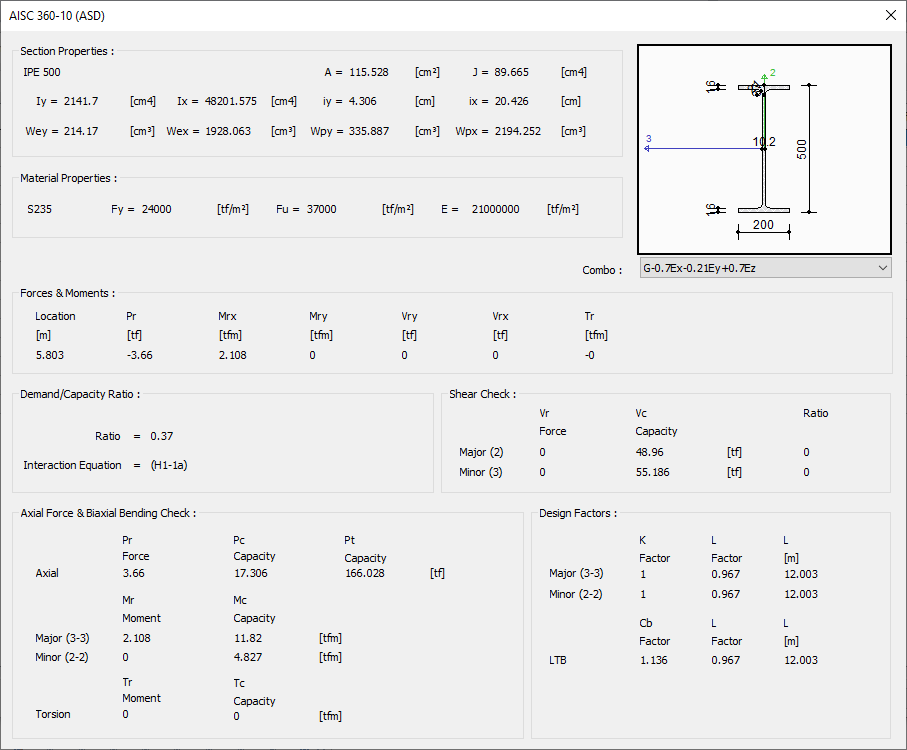
Specifications |
|---|
Schematic drawing  |
Section properties  It is the part where the name and geometric properties of the section take place. |
Material properties  The properties of the steel material used in the section are listed. |
Forces and moments  Internal forces occurring in the element, belonging to the selected load combination, are shown in this section. |
Combo  The load combination is selected. |
Demand/capacity ratio  The requirement / capacity ratio in the cross section of the selected load combination is displayed. |
Shear check  The shear capacity ratio of the steel secondary beam is shown. |
Axial force and biaxial bending check 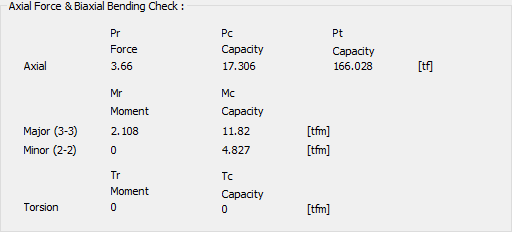 The axial capacity and moment capacity ratios of the steel secondary beam are shown. |
Design factors 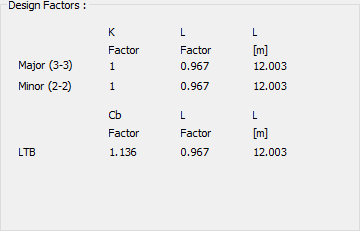 K factor: It is the effective length coefficient used in calculations. |
Next Topic
Related Topics
